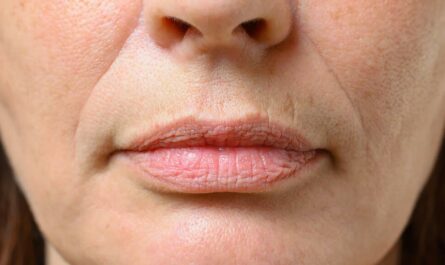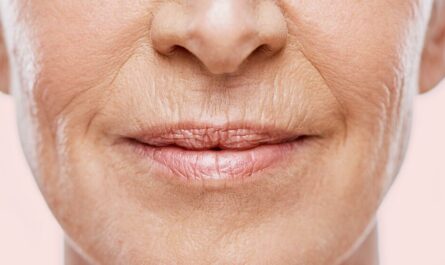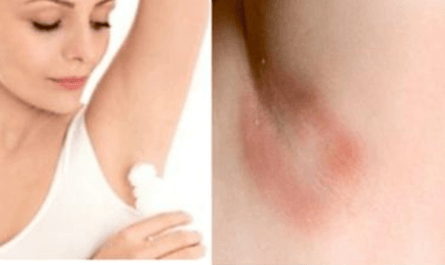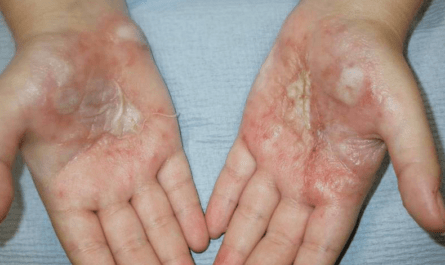A dark red rash on the skin can be both alarming and uncomfortable. It is often a sign of an underlying issue that requires attention and treatment. This condition can occur on any part of the body and may vary in size and shape. Differentiating between various types of rashes is crucial, as the underlying cause determines the appropriate treatment approach. This article will delve into dark red rash causes, symptoms, and treatment.
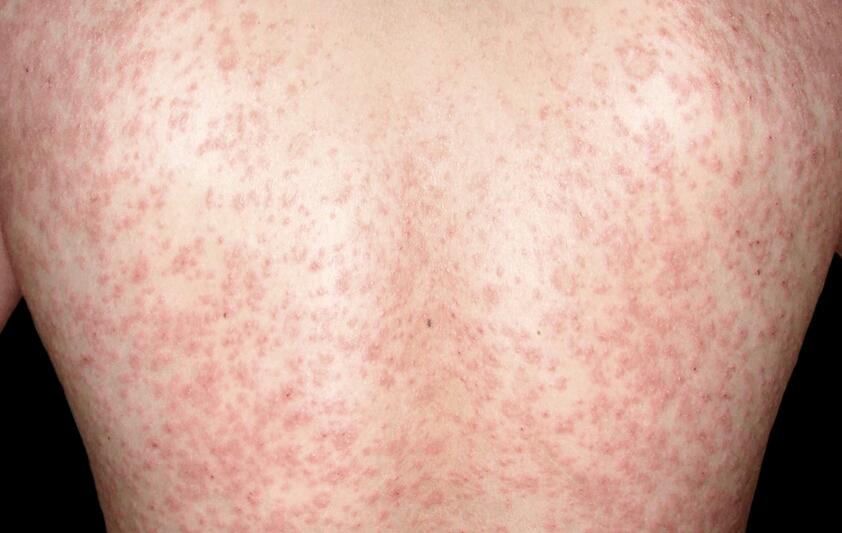
Common Causes of Dark Red Rash
Dark red rashes can be caused by a variety of factors, including:
1. Allergic Reactions
Allergic reactions occur when the immune system reacts to a specific substance that it perceives as harmful. This may include foods, medications, insect bites, or environmental allergens such as pollen or dust mites.
When an allergic reaction occurs, the body releases histamines. This can cause dark red rashes along with other symptoms such as itching, swelling, and difficulty breathing.
2. Contact Dermatitis
Contact dermatitis is an inflammatory skin condition that occurs when the skin comes into contact with an irritant or allergen. Common irritants include certain soaps, detergents, cosmetics, and chemicals. The skin reacts by becoming red, inflamed, and itchy. In severe cases, blisters may develop.
3. Eczema
Eczema, also known as atopic dermatitis, is a chronic skin condition characterized by dry, itchy, and inflamed skin. Dark red rashes are a common symptom of eczema.
The exact cause of eczema is unknown, but it is believed to be a combination of genetic and environmental factors. Triggers for eczema flare-ups may include allergens, irritants, stress, and changes in temperature or humidity.
4. Psoriasis
Psoriasis is a chronic autoimmune condition that causes the rapid growth of skin cells. This leads to the formation of thick, scaly patches of skin that are often dark red in color.
Psoriasis can be itchy, and painful, and may cause discomfort. The exact cause of psoriasis is unknown, but it is believed to involve a combination of genetic, immune, and environmental factors.
5. Infections
Infections caused by bacteria, fungi, or viruses can result in dark red rashes. For example, impetigo is a bacterial infection that causes red sores, usually on the face or limbs.
Ringworm is a fungal infection that causes circular, red, and scaly patches on the skin. Shingles is a viral infection caused by the varicella-zoster virus, which causes a painful rash with fluid-filled blisters.
6. Insect Bites
Mosquito bites, bed bug bites, or bites from other insects can cause localized dark red rashes. These rashes are often accompanied by itching, swelling, and inflammation. In some cases, an allergic reaction to the insect bite may occur, leading to a more severe rash.
7. Autoimmune Diseases
Certain autoimmune diseases, such as lupus or vasculitis, can cause dark red rashes as a result of the immune system mistakenly attacking healthy tissues. These rashes may be a manifestation of underlying systemic inflammation and can vary in severity and distribution.
8. Heat Rash
Heat rash, also known as prickly heat, occurs when sweat glands become blocked. This can lead to inflammation and the development of small, dark red bumps or blisters. This rash is common in hot and humid environments. Luckily, It typically resolves on its own once the skin cools down.
9. Medications
Some medications can cause adverse reactions, including dark red rashes. These rashes may be a result of an allergic reaction or a side effect of the medication. If you suspect that a medication is causing your rash, it is important to consult with your healthcare provider for further evaluation and guidance.
10. Stress
Emotional or physical stress can sometimes trigger dark red rashes. Stress can affect the immune system and lead to various skin reactions, including hives or eczema flare-ups. Managing stress through relaxation techniques, exercise, and seeking support can help reduce the occurrence of stress-related rashes.
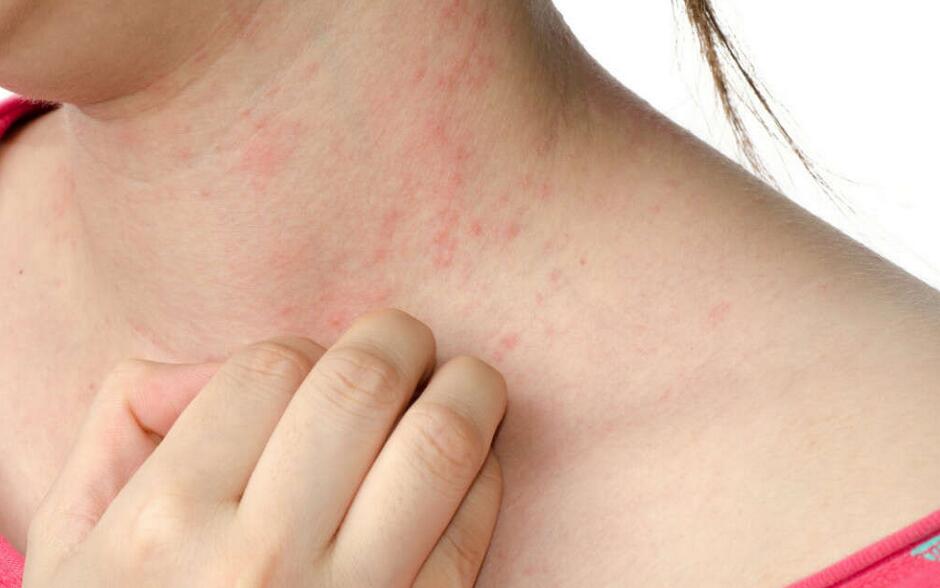
How to Differentiate Them from Other Rashes?
Differentiating dark red rashes from other types of rashes can be challenging, but certain characteristics and factors can help in the process. Here are some ways to differentiate dark red rashes from other rashes:
1. Color
Dark red rashes have a distinctive color that sets them apart from other rashes. They typically appear deep red or purplish in hue, although the exact shade may vary. This color can be a useful clue in distinguishing dark red rashes from other types of rashes.
2. Intensity
Dark red rashes often exhibit a more intense and noticeable color compared to other rashes. The redness may be deeper, more widespread, or concentrated in specific areas of the body. Pay attention to the intensity and extent of the redness when differentiating dark red rashes.
3. Symptoms
Dark red rashes are often accompanied by specific symptoms that can aid in their differentiation. These symptoms may include itching, swelling, inflammation, pain, blistering, or peeling. Take note of the associated symptoms and their severity to help distinguish dark red rashes from other rashes.
4. Underlying Causes
Understanding the underlying causes of rashes can provide insight into their nature. Dark red rashes can be caused by various factors such as allergic reactions, infections, dermatitis, autoimmune disorders, or medication.
5. Medical Evaluation
While visual examination and self-assessment can provide some clues, it is important to consult a healthcare professional for an accurate diagnosis.
Remember, self-diagnosis can be challenging and potentially inaccurate. If you are unsure about the nature of your rash or if it persists or worsens, seeking medical attention is always recommended.
12 Best Home Remedies for Dark Red Rash
The treatment of dark red rashes depends on the underlying cause and severity of the condition. Some common treatment options include:
1. Cold Compress

Applying a cold compress helps reduce inflammation and soothe itching. The cold temperature constricts blood vessels, reducing redness and swelling.
Take a clean towel or cloth, soak it in cold water, wring out excess water, and apply it to the affected area for 10-15 minutes. Repeat this several times a day as needed. You can also use ice wrapped in a cloth or a cold gel pack.
2. Oatmeal Bath
Oatmeal has anti-inflammatory properties that can provide relief from itching and soothe irritated skin. It forms a protective barrier on the skin, reducing irritation and promoting healing.
Add colloidal oatmeal (finely ground oatmeal) to a bathtub filled with lukewarm water. Soak in the bath for 15-20 minutes. Gently pat dry the skin and apply a moisturizer afterward. You can also use oatmeal-based products, such as oatmeal bath soaks or creams.
3. Aloe Vera Gel
Aloe vera has cooling and anti-inflammatory properties that can help reduce redness and soothe irritated skin. It also promotes healing and moisturizes the skin.
Extract fresh aloe vera gel from an aloe vera leaf. Apply the gel directly to the affected area and leave it on for 20-30 minutes before rinsing off. Repeat 2-3 times a day. You can also use commercially available aloe vera gel or creams.
4. Coconut Oil
Coconut oil has moisturizing and antimicrobial properties that can help soothe and protect the skin. It can alleviate itching and promote healing.
Take a small amount of organic, cold-pressed coconut oil and gently massage it onto the affected area. Leave it on until absorbed. Repeat 2-3 times a day. Make sure to choose virgin or extra virgin coconut oil for the best results.
5. Apple Cider Vinegar

Apple cider vinegar has antimicrobial and anti-inflammatory properties that can help alleviate itching and reduce inflammation associated with dark red rashes.
Dilute apple cider vinegar with equal parts of water. Soak a cotton ball in the solution and apply it to the affected area. Leave it on for 10-15 minutes before rinsing off.
Repeat 2-3 times a day. It’s important to note that undiluted apple cider vinegar may cause skin irritation, so proper dilution is crucial.
6. Witch Hazel
Witch hazel has astringent properties that can help reduce inflammation and relieve itching. It can also help dry out any blisters or oozing associated with the rash.
Soak a cotton ball in witch hazel and gently apply it to the affected area. Leave it on for 10-15 minutes before rinsing off. Repeat 2-3 times a day. Look for alcohol-free witch hazel products to avoid skin dryness.
7. Calamine Lotion
Calamine lotion contains ingredients like zinc oxide and ferric oxide, which can soothe itching and provide a cooling effect on the skin. It also helps dry out any oozing or weeping associated with the rash.
Shake the calamine lotion bottle well and apply it to the affected area using a cotton ball or your fingertips. Leave it on until dry. Repeat several times a day as needed. Calamine lotion is widely available over the counter.
8. Tea Tree Oil
Tea tree oil has antimicrobial and anti-inflammatory properties that can help alleviate itching and reduce inflammation caused by dark red rashes. However, it should be used with caution and diluted properly to avoid skin irritation.
Dilute tea tree oil with a carrier oil, such as coconut oil or olive oil, in a 1:1 ratio. Apply a small amount of the diluted solution to the affected area using a cotton ball. Leave it on until absorbed. Repeat 2-3 times a day. It’s important to perform a patch test first to check for any adverse reactions or allergies.
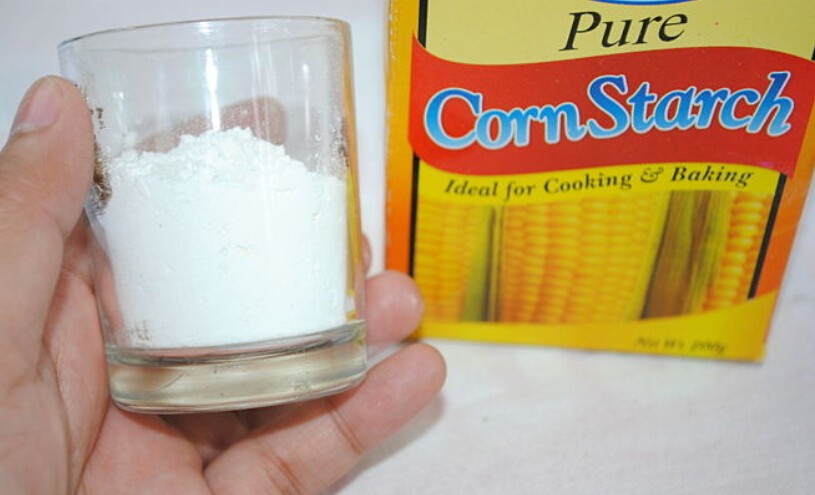
9. Baking Soda Paste
Baking soda has anti-inflammatory properties that can help reduce itching and inflammation associated with dark red rashes. It also has a soothing effect on the skin.
Mix baking soda with enough water to form a paste. Apply the paste to the affected area and leave it on for 10-15 minutes before rinsing off. Repeat 2-3 times a day. Make sure to rinse off the baking soda thoroughly to avoid skin dryness.
10. Chamomile Tea Compress
Chamomile tea has anti-inflammatory and soothing properties that can help relieve itching and reduce redness.
Brew a cup of chamomile tea and let it cool. Soak a clean towel or cloth in the cooled tea, wring out excess liquid, and apply it to the affected area for 10-15 minutes. Repeat several times a day. You can also use chamomile tea bags directly on the skin.
11. Honey
Honey has antimicrobial and anti-inflammatory properties that can help soothe and heal the skin. It can also provide relief from itching and reduce redness.
Apply a thin layer of raw, organic honey to the affected area. Leave it on for 20-30 minutes before rinsing off. Repeat 2-3 times a day. Ensure that you are not allergic to honey before using it topically.
12. Stay Hydrated
Drinking an adequate amount of water helps keep the skin hydrated and promotes overall skin health. It can also help flush out toxins from the body, which may contribute to skin inflammation.
Drink at least 8 glasses of water per day to stay hydrated. You can also consume water-rich foods such as fruits and vegetables to increase your water intake.
Prevention and Tips for Managing Dark Red Rash
Preventing and effectively managing dark red rashes involves a combination of lifestyle changes, proper skin care practices, and avoiding triggers that can exacerbate the condition. Here are some prevention tips and management strategies to consider:
1. Practice Good Hygiene
Keeping the affected area clean is crucial in preventing infections and further irritation. Gently wash the area with mild, fragrance-free soap and lukewarm water. Avoid using harsh soaps or scrubbing vigorously, as this can worsen the rash.
2. Moisturize Regularly
Dry skin can worsen rashes and lead to itching and inflammation. Apply a gentle, hypoallergenic moisturizer to the affected area at least twice a day. Look for moisturizers that are free of fragrances, dyes, and other potential irritants.
3. Avoid Triggers
Identify and avoid triggers that can worsen or cause dark red rashes. These triggers can vary from person to person but may include certain foods, allergens, irritants, or environmental factors. Keep a journal to track potential triggers and discuss them with a healthcare professional for further guidance.
4. Wear Breathable Fabrics
Opt for loose-fitting, breathable clothing made of natural fibers such as cotton. This allows better airflow to the skin and reduces friction, minimizing irritation and discomfort.
5. Practice Proper Skincare
Avoid using harsh or irritating skincare products, including soaps, lotions, and cosmetics that contain fragrances, dyes, or other potential allergens. Choose products specifically formulated for sensitive skin or those recommended by a dermatologist.
6. Protect from Sun Exposure
Excessive sun exposure can aggravate dark red rashes and cause further skin damage. Protect the affected area from the sun by wearing protective clothing, using a broad-spectrum sunscreen with a high SPF, and seeking shade during peak sun hours.
7. Manage Stress
Stress can trigger or worsen skin conditions, including dark red rashes. Practice stress management techniques such as deep breathing exercises, meditation, yoga, or engaging in activities that help you relax and unwind.
8. Avoid Scratching
Itching can intensify the rash and lead to further irritation or potential skin infections. Try to resist the urge to scratch, as it can break the skin and prolong the healing process. Instead, gently pat or tap the affected area to alleviate the itching sensation.
When to See a Doctor about Dark Red Rash?
It is advisable to see a doctor if you experience the following symptoms related to dark red rashes:
- Severe pain or discomfort associated with the rash.
- Persistent or worsening rash that does not improve with home remedies or over-the-counter treatments.
- Signs of infection, such as increased redness, warmth, swelling, or pus.
- Presence of fever or other systemic symptoms.
- Difficulty breathing or swallowing.
- Rash spreads rapidly or affects a large area of the body.
- History of chronic skin conditions or underlying medical conditions that may complicate the rash.
- If the rash is accompanied by other concerning symptoms or if you are unsure about the cause.
Conclusion
Dark red rashes can be distressing, but understanding their causes, symptoms, and treatment options can help effectively manage and alleviate them. If you or someone you know is experiencing persistent dark red rashes, seeking medical attention is essential for proper diagnosis and appropriate treatment.

